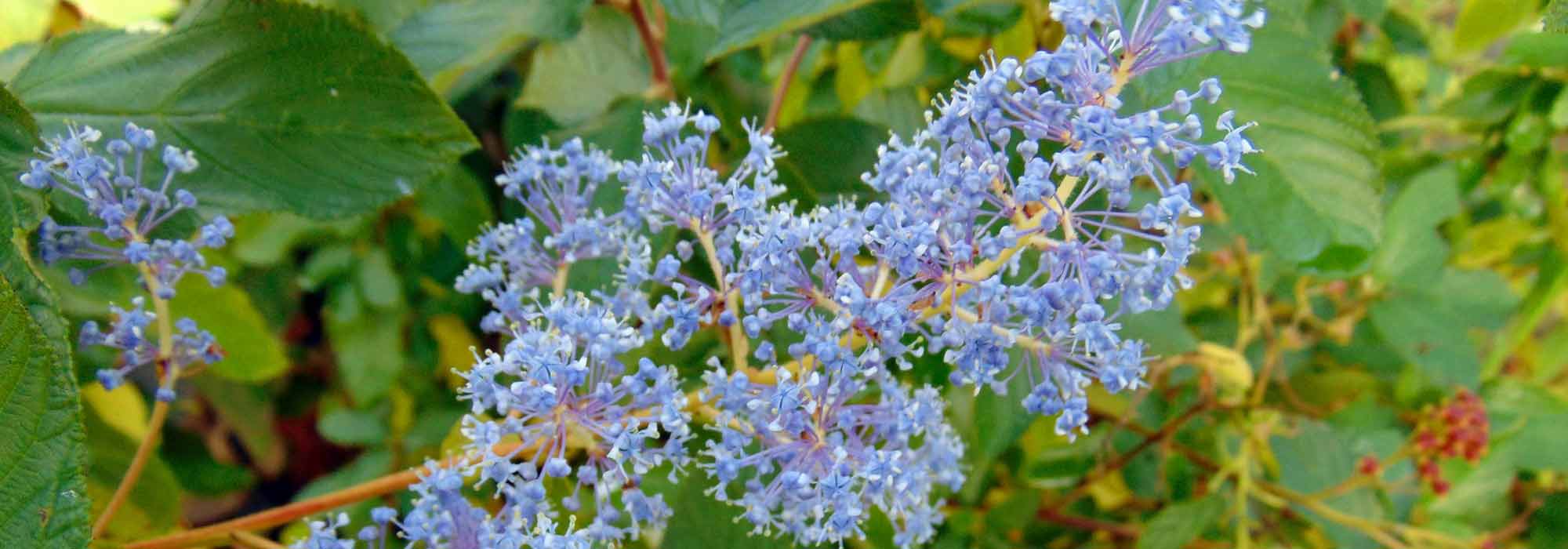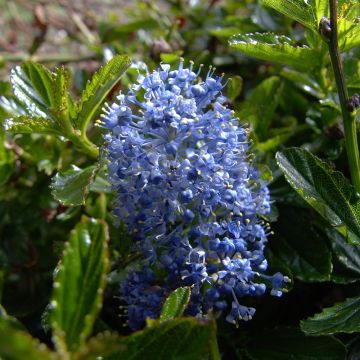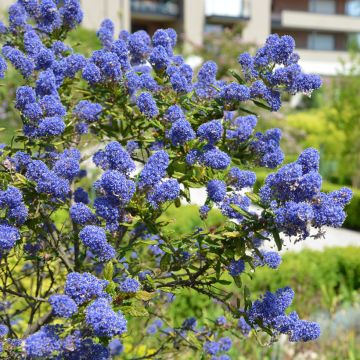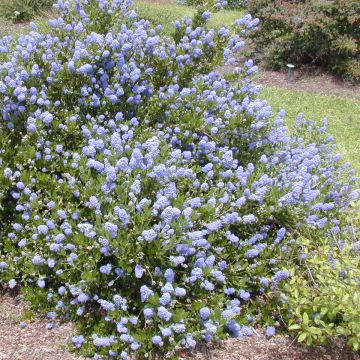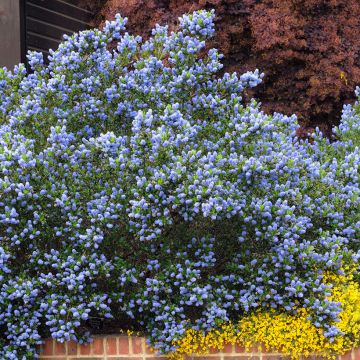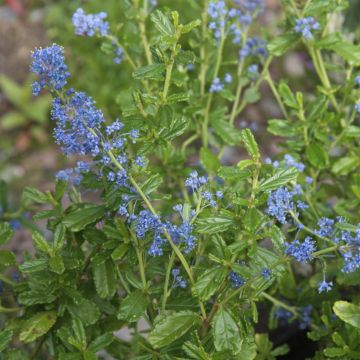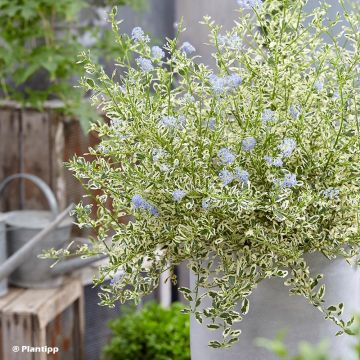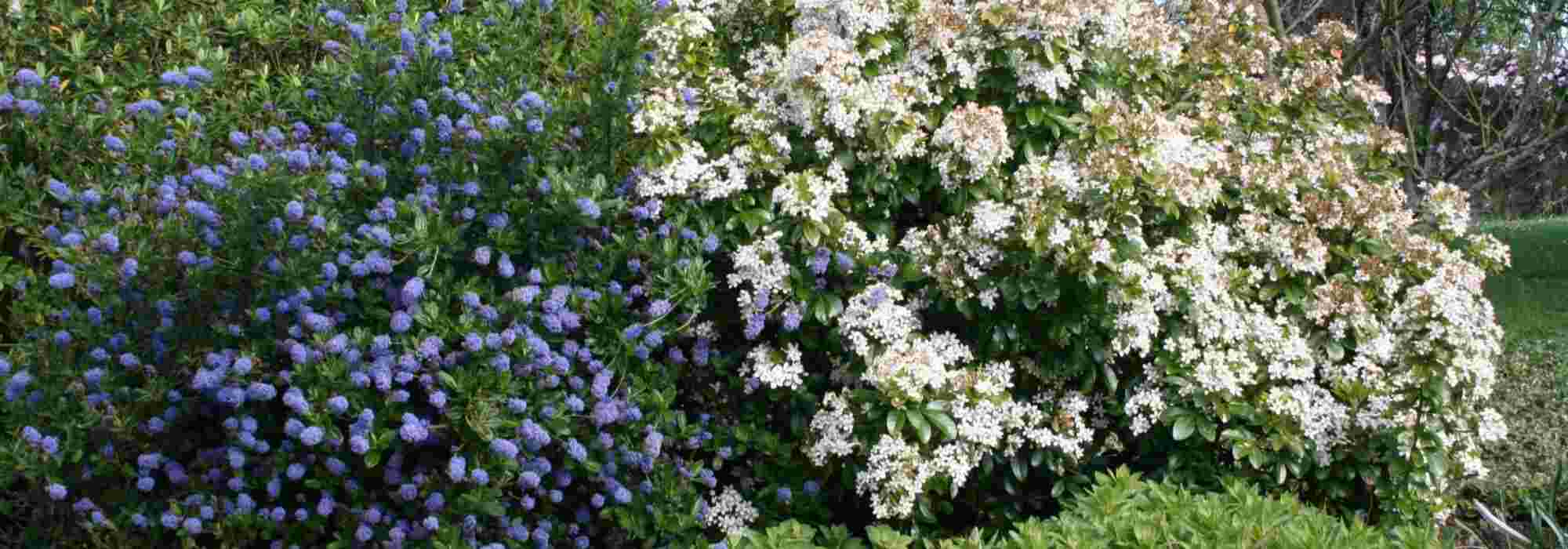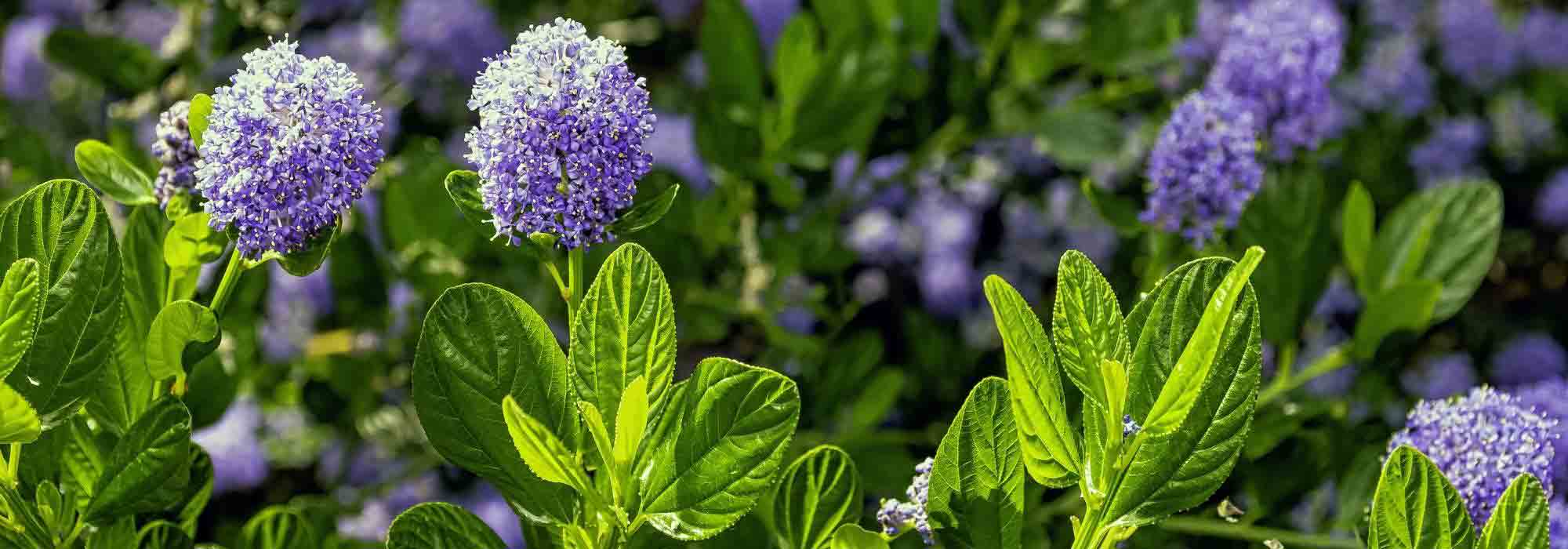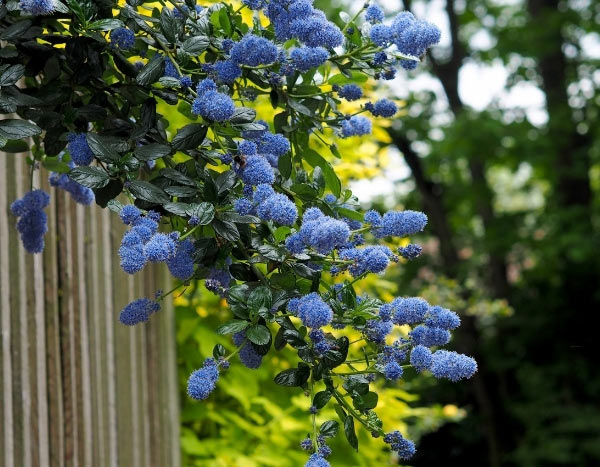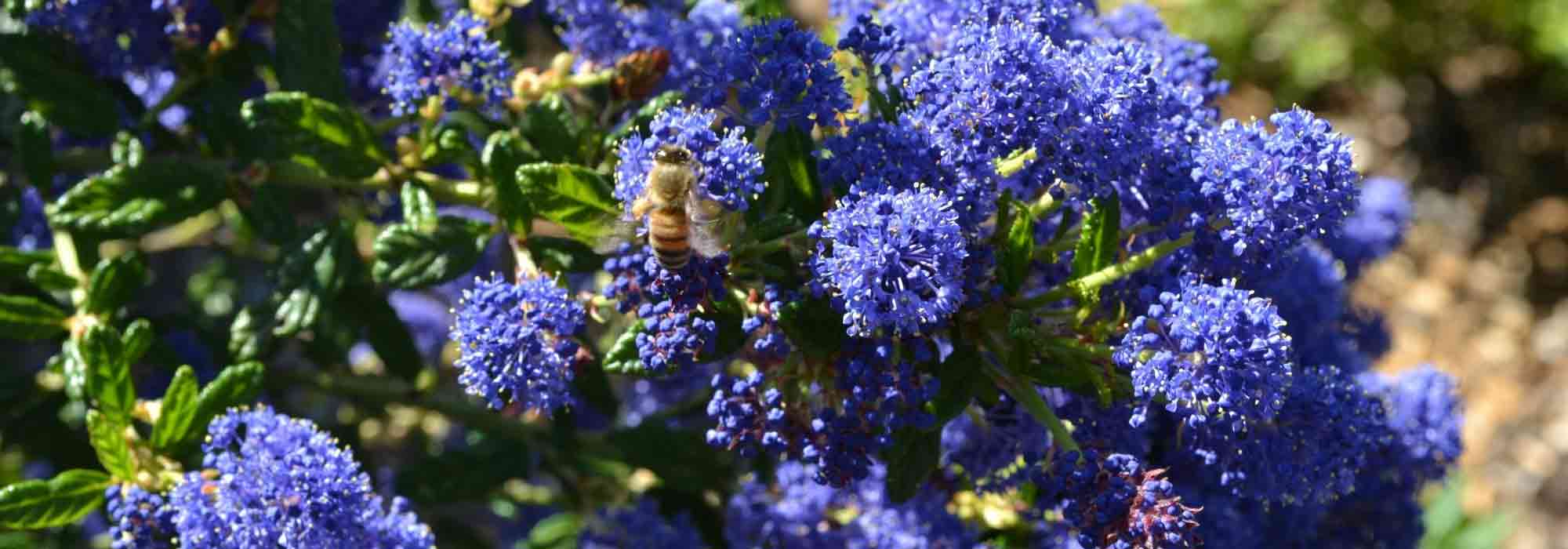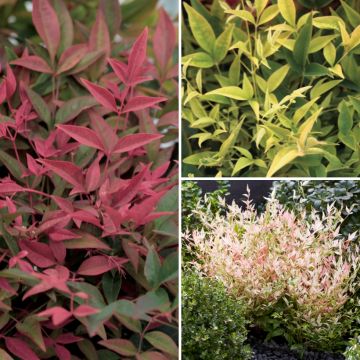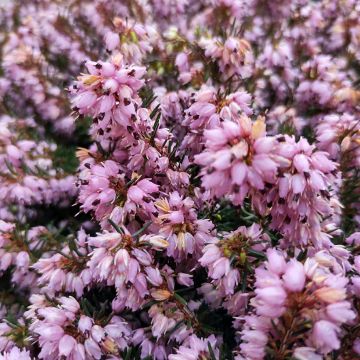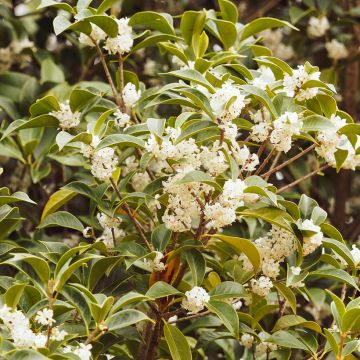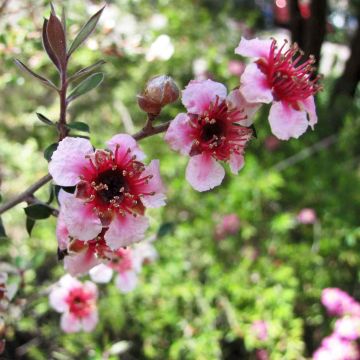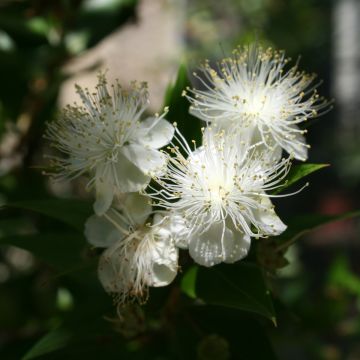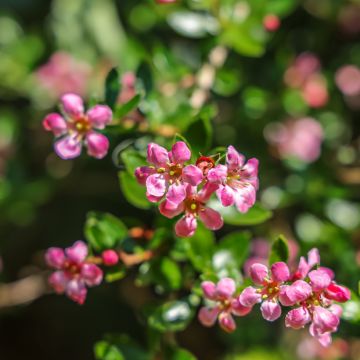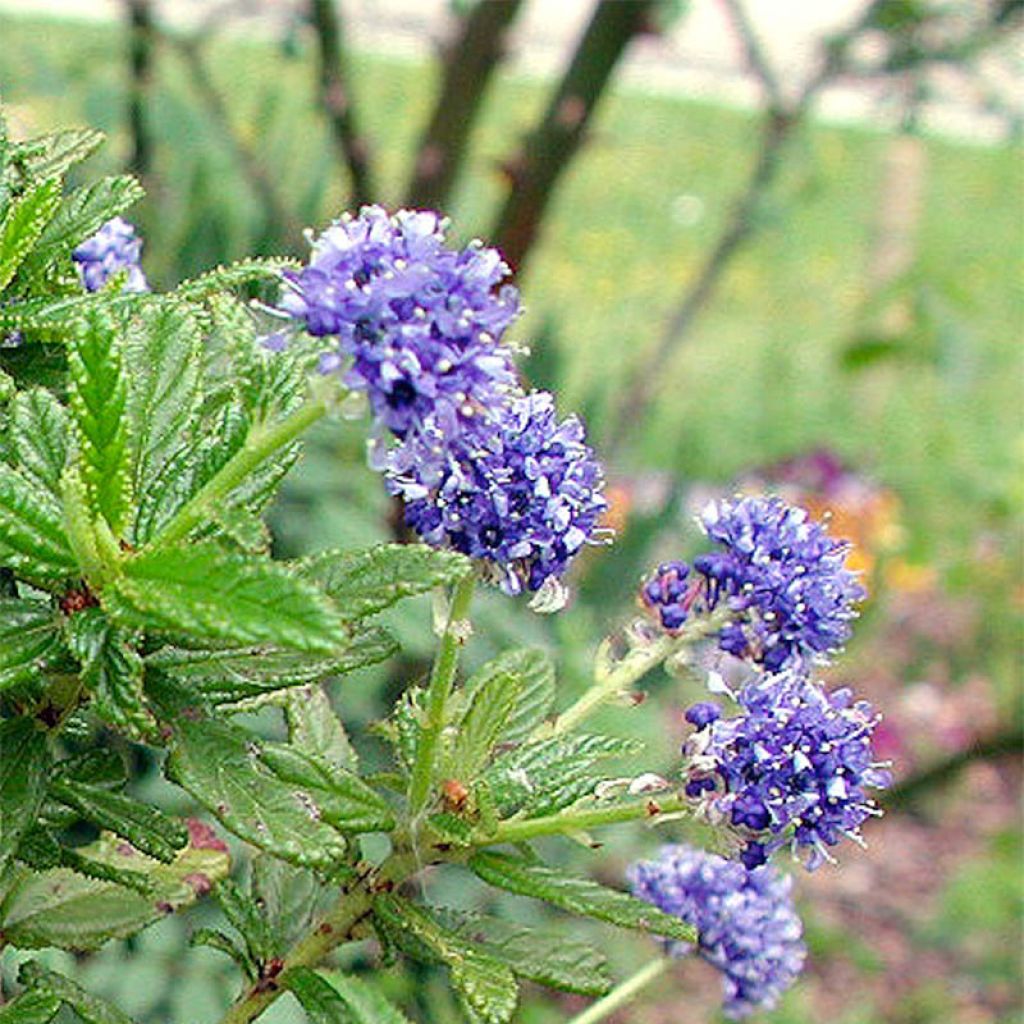

Ceanothus Blue Diamond
Ceanothus Blue Diamond
Ceanothus Blue Diamond ®
California Lilac, Blue Blossom
Planted in late March 2025 in medium quality soil with partial shade, it has quadrupled in size by September 2025 and should reach maturity (1.00m x 1.20m) by spring/summer 2026.
marc, 20/09/2025
Special offer!
Receive a €20 voucher for any order over €90 (excluding delivery costs, credit notes, and plastic-free options)!
1- Add your favorite plants to your cart.
2- Once you have reached €90, confirm your order (you can even choose the delivery date!).
3- As soon as your order is shipped, you will receive an email containing your voucher code, valid for 3 months (90 days).
Your voucher is unique and can only be used once, for any order with a minimum value of €20, excluding delivery costs.
Can be combined with other current offers, non-divisible and non-refundable.
Home or relay delivery (depending on size and destination)
Schedule delivery date,
and select date in basket
This plant carries a 24 months recovery warranty
More information
We guarantee the quality of our plants for a full growing cycle, and will replace at our expense any plant that fails to recover under normal climatic and planting conditions.

Would this plant suit my garden?
Set up your Plantfit profile →
Description
The Ceanothus Blue Diamond is a new variety of evergreen ideal for terraces and small gardens. This not very tall but dense and bushy Californian lilac spreads somewhat as an elegant ground cover in front of taller shrubs. It is not demanding in terms of soil type, grows quickly, and is decorative all year round with its shiny green foliage. It also offers abundant flowering in May-June, with a pretty dark blue colour. It is not afraid of the sun or drought and ages better in poor and light soils, preferring regions with mild winters.
Blue Diamond Ceanothus is a recently obtained horticultural hybrid from the Netherlands. Evergreen ceanothus plants are native to California. They belong to the Rhamnaceae family and are cousins of our buckthorn (Frangula purging), but they are native to chaparral and scrub vegetation and once established, they only need rainwater to survive.
The Blue Diamond variety naturally has a bushy, compact, and low habit; it is a dense shrub that can reach 90 cm (35.4 in) in height and 1 m (3 ft 4 in) 30 in width in a few years. Its flowers appear abundantly in May and June at the end of the branches, in the form of dense panicles of bright and deep blue flowers. This fragrant flowering attracts many pollinating insects. It is followed by the formation of seeds which, once mature, are explosively released. The persistent foliage is composed of small alternate, elongated, and finely toothed leaves, shiny dark green, measuring 1 to 3 cm (0.4 to 1.2 in) long. This variety tolerates light pruning after flowering. The average lifespan is 15 to 20 years, and it prefers a coastal climate.
In recent years, horticulturists have developed new varieties of ceanothus that are easier to acclimate and more suitable for gardens and terraces. It is difficult to imagine that the love for blue flowers will ever fade, and these new varieties are smaller and more manageable. With good hardiness down to -10°/-12°C in well-drained soil, tolerating slightly chalky soils if they are light, the Blue Diamond Ceanothus is an adorable little evergreen that is easy to integrate into the garden or rockery. Planted along the edge of a larger shrub bed, it adds the final touch that is appreciated in a well-kept garden. It can be combined with cistus, which are also evergreen and bloom in spring. Their pink and white corollas will harmonise perfectly with their bright blue clusters. This modest-sized variety will also enhance your balconies and terraces, with a few precautions.
Ceanothus Blue Diamond in pictures
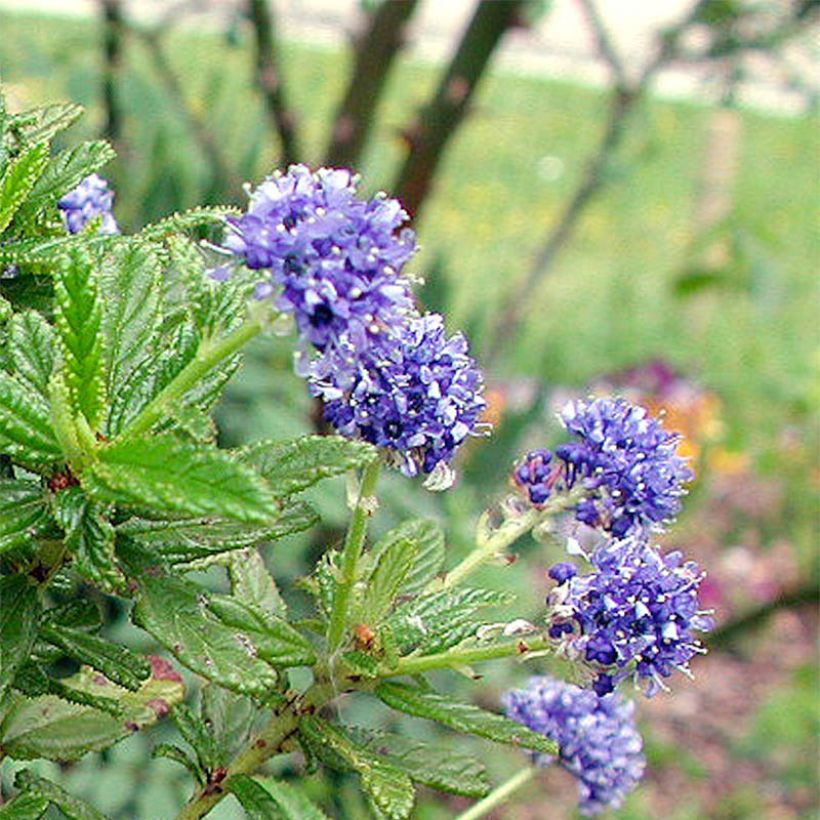

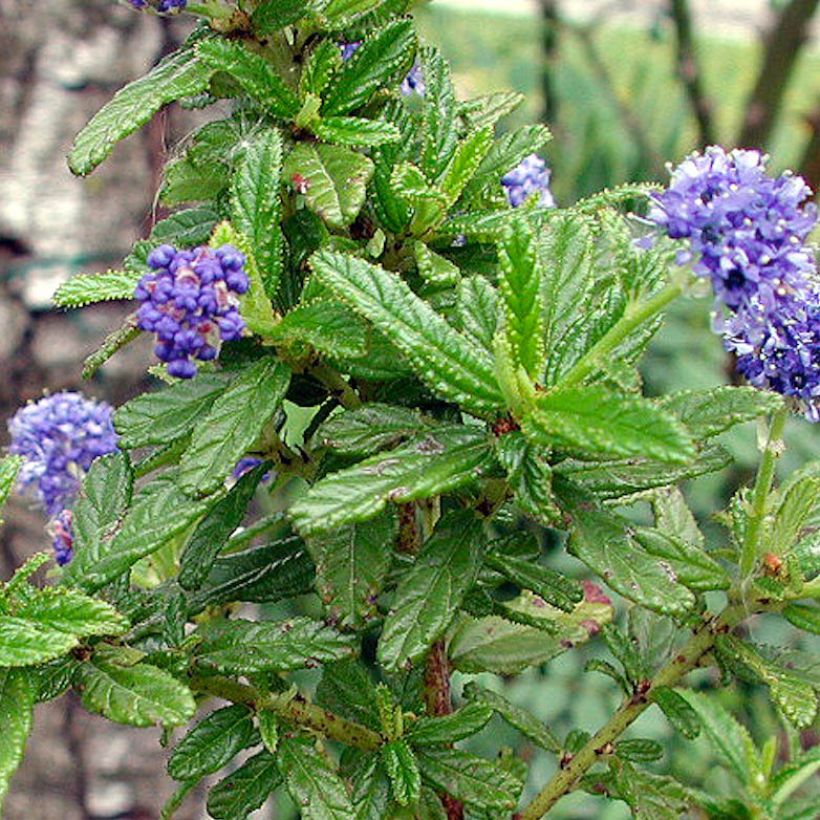

Plant habit
Flowering
Foliage
Botanical data
Ceanothus
Blue Diamond ®
Rhamnaceae
California Lilac, Blue Blossom
Cultivar or hybrid
Other Ceanothus
View all →Planting and care
To grow Ceanothus plants, choose a spot with full or partial sunlight and soil that is well-draining and moist in summer but not too wet. Avoid planting in areas with cold drafts. You can plant it at any time of the year except during frost. Prepare the soil by mixing it with materials that don't retain moisture, like compost, coarse sand, or perlite. Water generously once or twice a week, especially when the plant is young. After the third year, water only twice a month during drought. Ceanothus is easy to grow, but the soil must not be too moist in winter or summer, or a fungus that can be fatal to the plant may develop. To prevent this, plant Ceanothus on a mound if the soil is affected. Lightly prune the stems after flowering to encourage branching. Do not use fertiliser, but add a small amount of blood, fish and bone at the bottom of the planting hole.
Growing in a Pot:
Use lightweight soil, a mixture of garden soil, coarse sand, and compost. In summer, water only when the soil is dry, abundantly, but spacing out the waterings. The plant can be stored in a cool and bright room, with little or no heating, protected from severe frosts. Apply a slow-release fertiliser in spring and autumn.
Planting period
Intended location
Care
Planting & care advice
-
, onOrder confirmed
Reply from on Promesse de fleurs
Similar products
Haven't found what you were looking for?
Hardiness is the lowest winter temperature a plant can endure without suffering serious damage or even dying. However, hardiness is affected by location (a sheltered area, such as a patio), protection (winter cover) and soil type (hardiness is improved by well-drained soil).

Photo Sharing Terms & Conditions
In order to encourage gardeners to interact and share their experiences, Promesse de fleurs offers various media enabling content to be uploaded onto its Site - in particular via the ‘Photo sharing’ module.
The User agrees to refrain from:
- Posting any content that is illegal, prejudicial, insulting, racist, inciteful to hatred, revisionist, contrary to public decency, that infringes on privacy or on the privacy rights of third parties, in particular the publicity rights of persons and goods, intellectual property rights, or the right to privacy.
- Submitting content on behalf of a third party;
- Impersonate the identity of a third party and/or publish any personal information about a third party;
In general, the User undertakes to refrain from any unethical behaviour.
All Content (in particular text, comments, files, images, photos, videos, creative works, etc.), which may be subject to property or intellectual property rights, image or other private rights, shall remain the property of the User, subject to the limited rights granted by the terms of the licence granted by Promesse de fleurs as stated below. Users are at liberty to publish or not to publish such Content on the Site, notably via the ‘Photo Sharing’ facility, and accept that this Content shall be made public and freely accessible, notably on the Internet.
Users further acknowledge, undertake to have ,and guarantee that they hold all necessary rights and permissions to publish such material on the Site, in particular with regard to the legislation in force pertaining to any privacy, property, intellectual property, image, or contractual rights, or rights of any other nature. By publishing such Content on the Site, Users acknowledge accepting full liability as publishers of the Content within the meaning of the law, and grant Promesse de fleurs, free of charge, an inclusive, worldwide licence for the said Content for the entire duration of its publication, including all reproduction, representation, up/downloading, displaying, performing, transmission, and storage rights.
Users also grant permission for their name to be linked to the Content and accept that this link may not always be made available.
By engaging in posting material, Users consent to their Content becoming automatically accessible on the Internet, in particular on other sites and/or blogs and/or web pages of the Promesse de fleurs site, including in particular social pages and the Promesse de fleurs catalogue.
Users may secure the removal of entrusted content free of charge by issuing a simple request via our contact form.
The flowering period indicated on our website applies to countries and regions located in USDA zone 8 (France, the United Kingdom, Ireland, the Netherlands, etc.)
It will vary according to where you live:
- In zones 9 to 10 (Italy, Spain, Greece, etc.), flowering will occur about 2 to 4 weeks earlier.
- In zones 6 to 7 (Germany, Poland, Slovenia, and lower mountainous regions), flowering will be delayed by 2 to 3 weeks.
- In zone 5 (Central Europe, Scandinavia), blooming will be delayed by 3 to 5 weeks.
In temperate climates, pruning of spring-flowering shrubs (forsythia, spireas, etc.) should be done just after flowering.
Pruning of summer-flowering shrubs (Indian Lilac, Perovskia, etc.) can be done in winter or spring.
In cold regions as well as with frost-sensitive plants, avoid pruning too early when severe frosts may still occur.
The planting period indicated on our website applies to countries and regions located in USDA zone 8 (France, United Kingdom, Ireland, Netherlands).
It will vary according to where you live:
- In Mediterranean zones (Marseille, Madrid, Milan, etc.), autumn and winter are the best planting periods.
- In continental zones (Strasbourg, Munich, Vienna, etc.), delay planting by 2 to 3 weeks in spring and bring it forward by 2 to 4 weeks in autumn.
- In mountainous regions (the Alps, Pyrenees, Carpathians, etc.), it is best to plant in late spring (May-June) or late summer (August-September).
The harvesting period indicated on our website applies to countries and regions in USDA zone 8 (France, England, Ireland, the Netherlands).
In colder areas (Scandinavia, Poland, Austria...) fruit and vegetable harvests are likely to be delayed by 3-4 weeks.
In warmer areas (Italy, Spain, Greece, etc.), harvesting will probably take place earlier, depending on weather conditions.
The sowing periods indicated on our website apply to countries and regions within USDA Zone 8 (France, UK, Ireland, Netherlands).
In colder areas (Scandinavia, Poland, Austria...), delay any outdoor sowing by 3-4 weeks, or sow under glass.
In warmer climes (Italy, Spain, Greece, etc.), bring outdoor sowing forward by a few weeks.






























